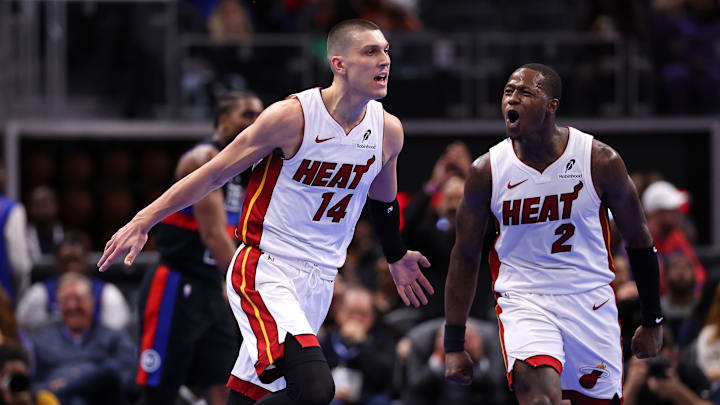Fans of the Detroit Pistons are buzzing after the team’s unexpected 5-7 start, which has them firmly in the mix in an awful Eastern Conference that only has two teams with winning records.
But there have been plenty of problems, namely turnovers, as the Pistons are currently 29th in the NBA, coughing it up 17.4 times per game, which isn’t going to get it done on most nights.
It almost cost them a game last night and has been an issue in all of their losses.
The Pistons need to clean it up, but there are also some stranger areas in which they have been lacking.
Detroit Pistons stats: The long rebound
The Pistons have mostly been great on the boards this season. They are 4th in the NBA in defensive rebounds per game and 11th in offensive.
Their defensive rebounding percentage is 4th best and they are 2nd overall in the NBA in total rebounding rate.
But they have been burned on giving up second chances on long rebounds. Part of this is that the Pistons are holding teams to 35 percent 3-point shooting, which leads to long rebounds, which are often 50/50 balls.
It’s hard to quantify this with stats, but if you look at the players with the top rebounding percentage on long rebounds, the Pistons are not among them. As you would expect, guys like Isaiah Stewart and Jalen Duren get most of their boards within five feet of the rim, but so does Cade Cunningham, whose average rebound distance is 6.6 feet, low for a guard.
Even Jaden Ivey (10 feet) and Malik Beasley (9.8) are closer to the rim than other guards around the league, who tend to get more of their rebounds on long caroms. Darius Garland’s average rebound distance (for example) is five feet more than Jaden Ivey’s, which is a stat I find interesting.
It shows the Pistons’ guards are crashing the boards, as they did last night, when these three players combined for 21 rebounds.
With this one, the Pistons probably have to live with the results, as they are securing a high rate of rebounds close to the hoop, but long rebounds did hurt them in losses against Charlotte and Houston.
There is also a good chance this issue goes away when Ausar Thompson returns, as he hunts down long rebounds and almost certainly would have secured some of these.
Transition 3-point defense
The Pistons are allowing teams to shoot around 35 percent from 3-point range, which is middle of the pack in the NBA.
But last night showed an area that they need to clean up, which is allowing wide-open 3-point shots in transition, which happened on three consecutive plays last night against the Heat and Tyler Herro.
You have to give Herro credit, as he couldn’t miss in the 4th quarter, but the Pistons did painfully little to even bother him.
Herro was getting behind transition (i.e. moving) screens off turnovers and pulling up uncontested, which is a problem the Pistons have had all season, largely going back to where this all started, which is with turnovers.
They obviously have to cut those down, but they also need to do a better job of identifying the shooters in transition and picking them up right away. This issue is not only being exacerbated by the turnovers, but by the guards crashing hard on the defensive glass and leaving themselves vulnerable to run outs.
These are all just interesting details within the overall game, but ones to watch as the season progresses.
